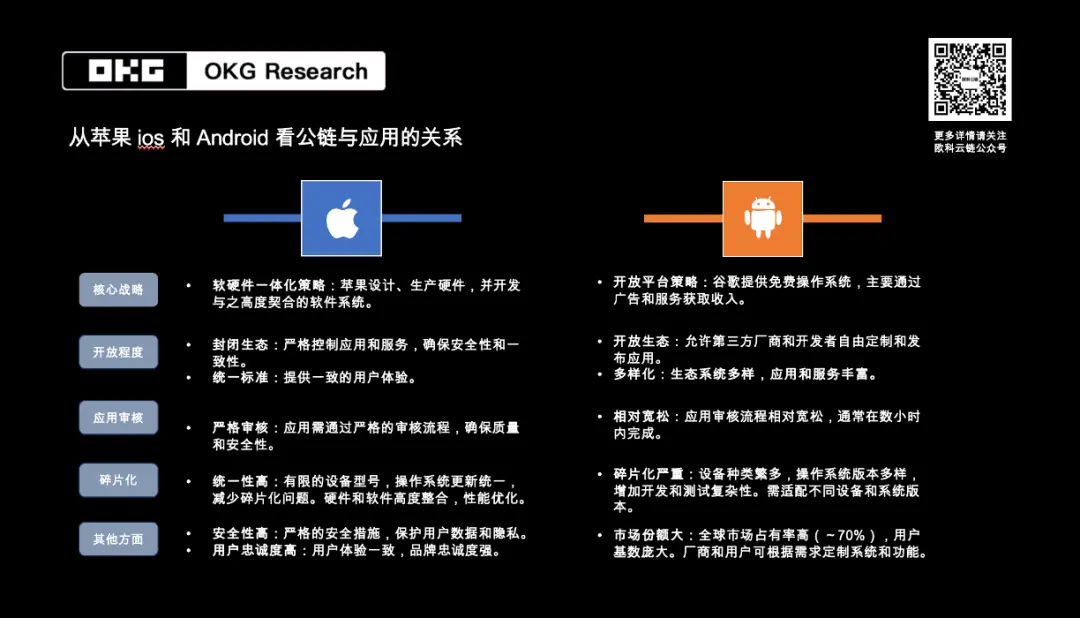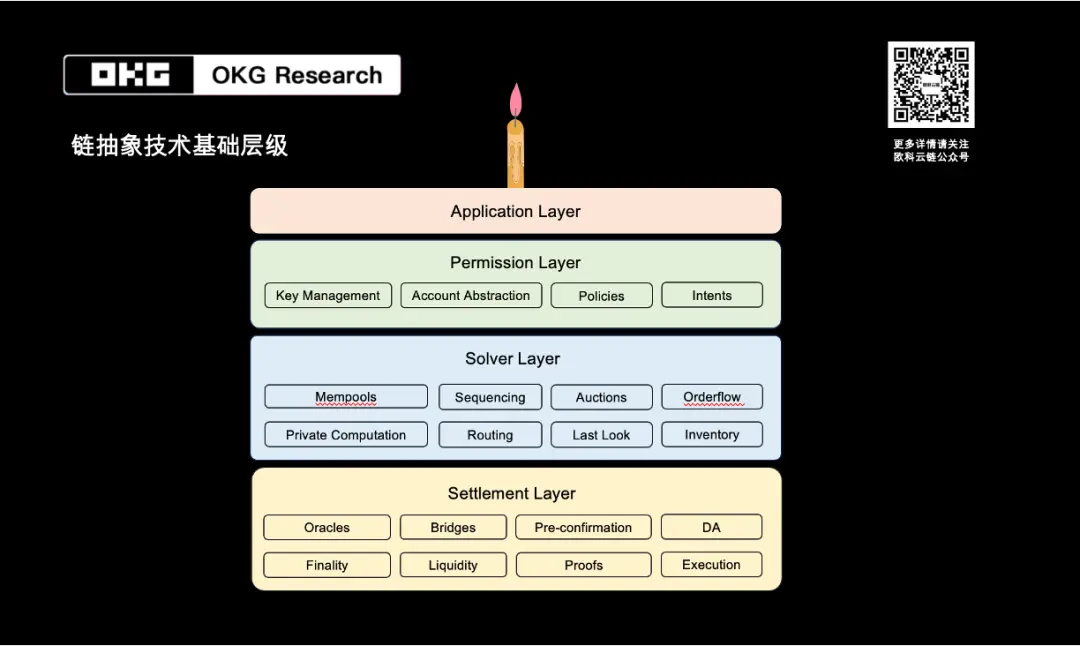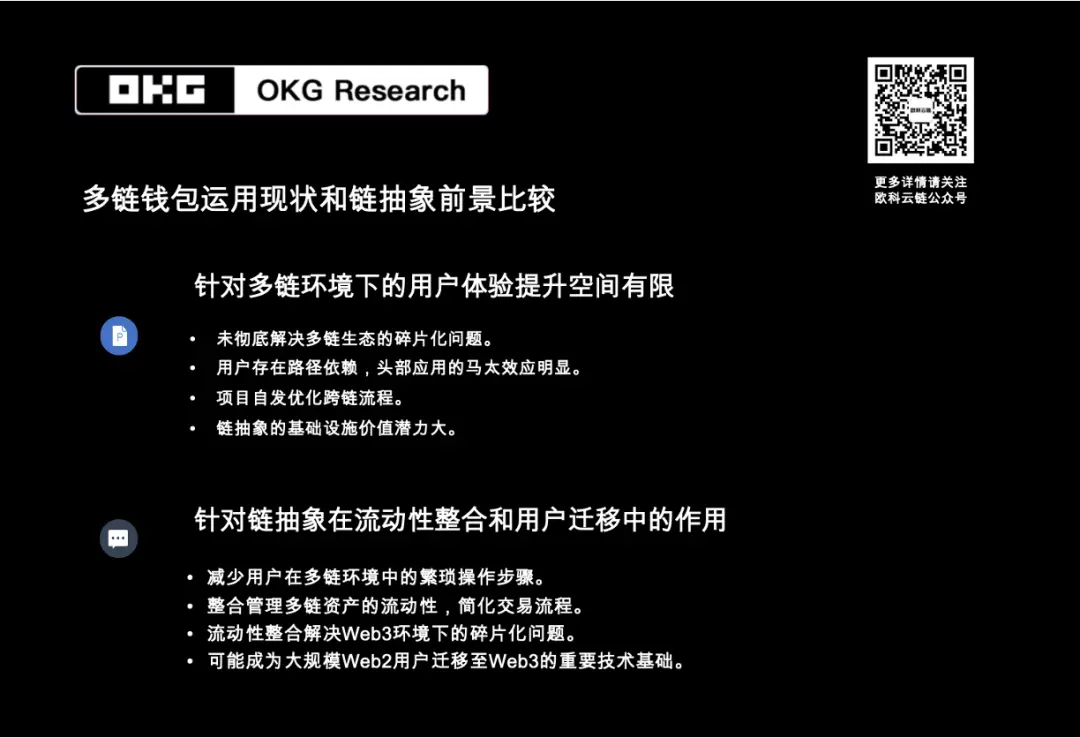Author: Samuel QIN, OKG Research
In the current rapid evolution of the cryptocurrency market, user growth has become the cornerstone of the industry's sustainable development. The mainstream view is shifting from pure technological exploration to a greater emphasis on application value. Although the Web3 ecosystem has developed rapidly in recent years, and the entry of traditional capital has brought new vitality, there are still some noteworthy aspects regarding the expansion at the application level.
The increasingly expansive public chain ecosystem can be overwhelming, and the rapid development of the Web3 ecosystem has created a demand for cross-chain interoperability, leveraging the advantageous resources of different chains to realize greater value. This reflects the natural evolution of the industrial ecosystem, akin to how e-commerce platforms have evolved from a single platform to an integrated industry-wide chain.
However, from the perspective of public chain competition, the ecological moat built around killer applications and users is an absolute reliance for ensuring industry advantages. Therefore, setting higher compatibility thresholds and migration costs will be a key consideration. From the perspective of technological development, the different consensus mechanisms and programming languages create many challenges for cross-chain technology itself, which also poses technical barriers to value transfer and information exchange between different blockchains.
The relationship between public chains and applications can be partially illuminated by the different mobile ecosystems of Apple and Android.
 *Table Source: OKG Research_
*Table Source: OKG Research_
Apple employs an integrated hardware and software strategy. This strategy ensures a high degree of compatibility between hardware and software, providing a smooth and consistent user experience. In contrast, Android allows multiple manufacturers to use its operating system, resulting in a diverse hardware ecosystem, but also leading to device fragmentation and varying application quality.
This perfectly illustrates two different ecological development approaches: integrated hardware and software can better define its ecological closed loop, where application entry and migration require relatively higher costs; while an open system requires a wide variety of compatible devices, and user experience is significantly related to hardware.
As an open environment, a public chain system needs to form its competitive advantage by minimizing development thresholds and enhancing user experience. Currently, the following strategies are typically adopted:
Modular functional components: Provide easy-to-integrate modular development tools, such as smart contract templates, SDKs, and API interfaces, to help developers quickly build applications. For example, Ethereum's Truffle framework and OpenZeppelin's smart contract library offer developers rich resources and simplify the development process.
Improving underlying infrastructure: Optimize the performance and security of the blockchain to ensure high throughput, low latency, and strong security guarantees. For instance, Solana achieves high TPS through its high-performance consensus mechanism, meeting the needs of large-scale applications.
Enhancing user experience: Develop intuitive and secure wallets and user interfaces to lower the entry barrier for users. For example, the OKX Web3 Wallet, compared to single-chain ecological wallets or multi-chain wallets that only support a few chains, currently supports over 100 public chains, providing a one-stop user management function and a rich DApp ecosystem, offering users a comprehensive and convenient Web3 experience.
Although the overall user-friendliness of Web3 has significantly improved, for newcomers just entering Web3, understanding the on-chain workflow can be quite a laborious process, while expressing their intentions often takes just a sentence. If at this moment you need to transfer 1 ETH from the Ethereum network to the Polygon network, the specific process can be broken down into:
 *Flow Chart Source: OKG Research_
*Flow Chart Source: OKG Research_
From the flowchart, we can see:
Users need to assess their account balance (if insufficient, they need to gather ETH from other wallets to the designated Ethereum wallet)
Confirm the direction of the transfer
Confirm the gas fee
Confirm receipt
If users only need to focus on whether their transfer needs are ultimately met, delegating the remaining cross-chain checks and actions to a specific network or application, then the interaction process will be greatly simplified.
Imagine if you were planning to embark on a journey to different countries, and while using an international credit card to shop around the world, as a user, you wouldn't need to worry about different countries' currency types, exchange rates, cross-border payment settlement processes, or different countries' payment network systems. You would just swipe your card, and the entire complex process would be automatically completed at the underlying level. This is a form of "abstraction," hiding complexity and providing a simple user experience.
The previously mentioned "chain abstraction" follows the same principle, with its core value being:
Simplifying complexity: Users only need to specify the "starting point" and "destination."
Unified interface: The underlying chains or any bridging protocols involved are managed by a single simple interface.
Smart routing: Automatically select the optimal path and the best bridging protocol.
Error handling: Automatic retries, handling exceptions, and providing unified error feedback.
We can consider chain abstraction as a technical means aimed at solving the asset, liquidity, and account fragmentation issues in a multi-chain ecosystem. By implementing a unified interface and standards, it enables users to interact across chains based on their intentions, simplifying the user experience so that users do not need to understand the details of the underlying chains to complete cross-chain operations and value transfers. This reduces complexity for users in a multi-chain environment and enhances interoperability.
However, regarding the current development of chain abstraction technology, the existing technical implementations still face numerous challenges, such as delays in cross-chain message transmission, security issues, and cost problems associated with cross-chain operations. Some projects are attempting to improve these issues through lightweight cross-chain protocols for asset transfers or decentralized gateways for cross-chain communication, but large-scale deployment remains limited.
Currently, mainstream views categorize chain abstraction into four levels: application, permission, solving/execution, and settlement, known as the CAKE Framework, which breaks down user intentions step by step to obtain specific optimal execution steps.
 *Graph Source: OKG Research, https://frontier.tech/the-cake-framework_
*Graph Source: OKG Research, https://frontier.tech/the-cake-framework_
However, the process involves various issues based on user subjective intentions, cross-chain interactions, cross-DApp interactions, trusted execution environments, and state confirmations, each of which seems quite challenging to resolve. Many projects in the industry are currently pushing for the application of chain abstraction technology based on user needs, and they are in a stage of continuous development and iteration. Multi-chain wallet applications, represented by OKX Web3 Wallet, can serve as important infrastructure in the chain abstraction track. The chain abstraction technology in OKX Web3 Wallet has already shown initial results, manifested in the simplification of multi-chain asset management and the convenience of cross-chain interactions. Users can manage assets across different chains on the same interface, avoiding frequent network switches, and can complete cross-chain transfers using a single wallet, significantly reducing the complexity of cross-chain operations. The newly launched smart contract wallet feature has also improved the shortcomings of traditional externally owned accounts (EOA) wallets in areas such as multi-chain wallet management integration, user authorization, and gas fee consolidation.
In many past discussions, multi-chain wallets and chain abstraction have been compared, with discussions often focusing on whether wallet applications that have already significantly improved interaction experiences compared to EOAs still need chain abstraction.
Here, I would like to discuss two directions:
Whether user experience needs to be significantly improved in the current application context. In the current multi-chain environment, there is indeed significant room for improvement in user experience, but the urgency of demand may not be uniform. Taking cross-chain transactions as an example, current mainstream multi-chain wallets still require users to manually switch networks and pay gas fees, which does not truly resolve the fragmentation issue of the multi-chain ecosystem. However, in practical applications, the flow of funds on-chain often shows clear profit-seeking tendencies, and users are more inclined to choose known paths or well-optimized applications. Due to the Matthew effect of leading applications, many projects have spontaneously invested in optimizing cross-chain processes. For instance, many DeFi protocols simplify users' cross-chain operations by integrating cross-chain bridges and liquidity aggregators, providing a more convenient experience. For chain abstraction projects, relying solely on enhancing user experience narratives is insufficient to form a strong competitive barrier. Therefore, the value of chain abstraction lies more in its role as infrastructure, gradually achieving seamless interoperability across chains, currently focusing on re-integrating liquidity between chains, and in the future supporting potential large-scale user migrations and cross-chain application scenarios.
Liquidity integration is an important issue that the current industry cannot avoid, especially in the process of migrating Web2 users to Web3. The continuous influx of incremental users is crucial for future development, but the key to this transition lies in providing a more convenient user experience, particularly in the integration of assets, transactions, and payment scenarios in a multi-chain environment to ensure a smooth migration from Web2 to Web3, which requires lowering the interaction barriers faced by initial users. Chain abstraction technology helps users reduce cumbersome operational steps in a multi-chain environment through unified interfaces and cross-chain resource integration, allowing Web2 users to seamlessly enter the Web3 ecosystem. For example, chain abstraction can automatically manage the liquidity of multi-chain assets, simplify payment processes, and integrate transaction experiences across different chains, thereby addressing fragmentation issues in the Web3 environment. This liquidity integration not only enhances user experience but also lays a solid foundation for the widespread application of Web3 and large-scale user migration.
 *Chart Source: OKG Research_
*Chart Source: OKG Research_
It can be seen that the application scenarios of chain abstraction are actually laying the groundwork for the true maturity of Web3. It is not only dedicated to solving interoperability issues in the current blockchain ecosystem but also significantly reduces complex operations in a multi-chain environment through cross-chain resource integration and liquidity management.
These improvements are driving the Web3 ecosystem towards a more open and interconnected direction. In the future, chain abstraction is expected to become an important pillar for the large-scale adoption of decentralized applications, providing efficient and seamless infrastructure support, helping more users easily enter the Web3 world and achieve seamless multi-chain interactions.
免责声明:本文章仅代表作者个人观点,不代表本平台的立场和观点。本文章仅供信息分享,不构成对任何人的任何投资建议。用户与作者之间的任何争议,与本平台无关。如网页中刊载的文章或图片涉及侵权,请提供相关的权利证明和身份证明发送邮件到support@aicoin.com,本平台相关工作人员将会进行核查。




